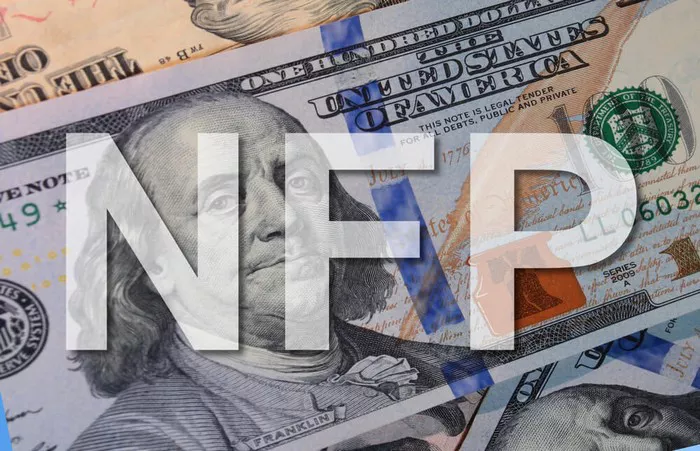The release of the Nonfarm Payroll (NFP) report by the U.S. Bureau of Labor Statistics is a highly anticipated event in the financial markets. Investors and traders closely scrutinize the data as it provides insights into the health of the U.S. labor market. Surprises in NFP figures can trigger significant market movements, impacting various asset classes and influencing investor sentiment. In this article, we explore what Nonfarm Payroll surprises mean for the market.
I. Understanding Nonfarm Payrolls:
The Nonfarm Payroll report, released on the first Friday of each month, provides a comprehensive overview of employment trends in the United States, excluding farm workers, private household employees, and nonprofit organization employees. It includes data on the total number of paid U.S. workers, excluding certain sectors, making it a key indicator of economic health.
II. The Impact of Nonfarm Payroll Surprises:
Equity Markets:
Nonfarm Payroll surprises can have a profound impact on equity markets. A better-than-expected NFP figure, indicating strong job growth, is generally perceived positively by investors. It signals a robust economy, potentially leading to higher corporate profits. As a result, stock markets may experience a rally as investors gain confidence in the overall economic outlook.
Bond Markets:
In the bond markets, Nonfarm Payroll surprises can influence interest rates. A strong NFP report may raise concerns about inflation and prompt expectations of tighter monetary policy. This can lead to higher bond yields as investors demand higher returns to compensate for perceived increased risks. Conversely, a weaker-than-expected NFP figure may have the opposite effect, causing bond prices to rise as yields fall.
Foreign Exchange Markets:
Currency markets are highly sensitive to Nonfarm Payroll surprises. A strong jobs report can strengthen the U.S. dollar as it fuels expectations of higher interest rates. On the other hand, a disappointing NFP figure may weaken the dollar as investors reassess their expectations for future rate hikes. Currency pairs, especially those involving the U.S. dollar, may experience heightened volatility in the wake of Nonfarm Payroll surprises.
III. Interpreting Nonfarm Payroll Surprises:
Beat vs. Miss:
A Nonfarm Payroll surprise is typically categorized as a “beat” or a “miss.” A beat occurs when the reported job gains exceed expectations, while a miss happens when the actual figure falls below the consensus forecast. The extent of the surprise, whether positive or negative, contributes to the market reaction.
Revisions and Reactions:
It’s essential for market participants to pay attention to revisions in NFP data. The initial release is subject to subsequent adjustments, and revisions can significantly impact market sentiment. Traders and investors should consider both the headline figure and any revisions when gauging the true impact of Nonfarm Payroll surprises.
Sectoral Impact:
Nonfarm Payroll surprises can affect different sectors of the economy differently. For example, a strong NFP report might benefit consumer discretionary stocks, signaling increased consumer spending confidence. Conversely, sectors that thrive in a low-interest-rate environment, such as utilities or real estate, may be adversely affected by a surprise indicating potential interest rate hikes.
FAQs on Nonfarm Payroll Surprises:
Q1: What is the Nonfarm Payroll report?
A1: The Nonfarm Payroll report is a monthly release by the U.S. Bureau of Labor Statistics, providing data on the total number of paid U.S. workers, excluding certain sectors like farming, private household employees, and nonprofit organization employees. It is a key indicator of economic health.
Q2: Why are Nonfarm Payroll surprises significant for the markets?
A2: Nonfarm Payroll surprises are significant as they provide insights into the health of the U.S. labor market. Better-than-expected or worse-than-expected figures can impact investor sentiment and trigger market movements across equities, bonds, and currencies.
Q3: How do equity markets react to Nonfarm Payroll surprises?
A3: Equity markets may experience a rally in response to a better-than-expected Nonfarm Payroll figure, signaling a strong economy and potential corporate profit growth. Conversely, a weaker-than-expected figure may lead to market declines.
Q4: How do Nonfarm Payroll surprises influence bond markets?
A4: Nonfarm Payroll surprises can impact bond markets by influencing interest rates. A strong NFP report may raise concerns about inflation, leading to higher bond yields, while a weak report may have the opposite effect.
Q5: How are currency markets affected by Nonfarm Payroll surprises?
A5: Currency markets are highly sensitive to Nonfarm Payroll surprises. A strong jobs report can strengthen the U.S. dollar, while a weaker-than-expected figure may weaken the dollar as investors reassess expectations for future interest rate hikes.
In conclusion, Nonfarm Payroll surprises play a crucial role in shaping market sentiment and influencing investment decisions. Understanding the potential impact on equities, bonds, and currencies allows market participants to make informed decisions in response to the latest data releases. Traders and investors should closely monitor Nonfarm Payroll reports and be prepared for potential market volatility in the aftermath of surprises.

